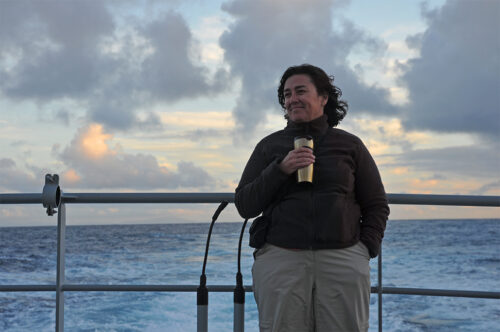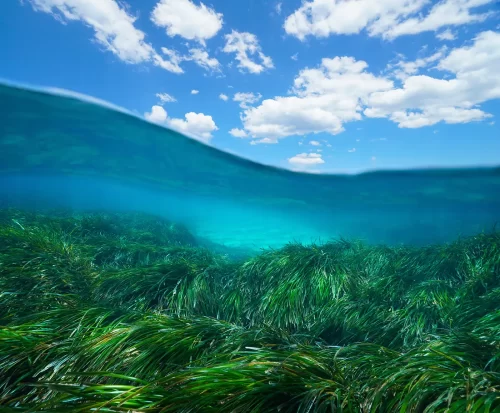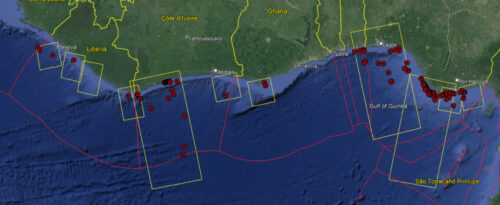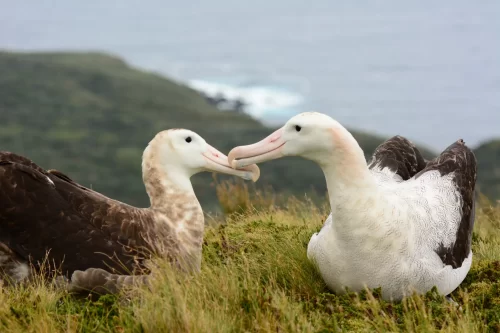APEC members share marine resources across a single ocean basin. Ensuring sustainable exploitation and trade is a shared concern.

Credit: ©Bronwen Golder
The Asia-Pacific Economic Cooperation, or APEC, is an intergovernmental forum for 21 member economies in the Pacific Rim that promotes free trade throughout the Asia Pacific region. The APEC grouping brings together members ranging from the United States to Papua New Guinea, collectively accounting for about 60 percent of global GDP. The forum represents a significant opportunity for dealing with global challenges in fishing transparency and sustainability. Recently, APEC countries Chile and Peru, the Food and Agriculture Organization of the United Nations (FAO) and Global Fishing Watch participated in the webinar “Transparency as a Tool for a Sustainable Ocean Economy” to promote a greater understanding of technological tools and how they can support the fight against illegal, unreported and unregulated (IUU) fishing.
As a blue backyard for some of the world’s most booming economies, Asia Pacific marine ecosystems accounted for nearly 52 percent of global marine fisheries catch in 2018. IUU fishing is a serious threat to these resources, while also affecting economic and sustainable growth. The APEC Oceans and Fisheries Working Group (OFWG) supports the forum’s wider mission to foster sustainability. In 2019, it developed and secured the adoption of the APEC Roadmap on Combatting IUU fishing.
The roadmap makes it clear that eliminating IUU fishing from waters that are the responsibility of APEC economies will require a coordinated and integrated approach, robust regulations and effective monitoring, control and enforcement across a vast ocean area. Transparency of fishing activity can help ensure that illegal activity is detectable and legal fishing is visible to markets and consumers.
Assisted by Global Fishing Watch and as a project within the APEC OFWG framework, Chile hosted the webinar series as an avenue for exploring existing and proposed technology and transparency options, and opportunities to combat IUU fishing. Between August 13 and September 10, members of the OFWG examined the various tools that use open data to increase awareness of human activity at sea and deliver transparency at the national level. These tools and technologies foster innovation, information sharing, international cooperation and strategies that can help achieve a sustainable ocean economy.
Bronwen Golder, a fellow with the Stanford University Center for Ocean Solutions and a passionate advocate for ocean conservation, moderated the event and shared her reflections with us.
This interview was edited for clarity and length.
Q: How is APEC well suited to help harness transparency as a tool towards a sustainable ocean economy?
As a grouping of 21 economies spanning the full breadth of the Pacific Rim, APEC brings together perhaps the most diverse and influential community of ocean users, beneficiaries and guardians on the planet. While hugely diverse in their interests and capabilities, the APEC economies are aligned around an ambition for the future sustainability of ocean resources and the elimination of IUU fishing. That alignment, and the adoption of the 2019 Roadmap on Combatting IUU fishing, provides the critical context for a regionwide embrace of transparency and traceability. Individually, many APEC economies are pursuing greater transparency across their ocean economy interests and actions. That individual pursuit can only be strengthened and enhanced by the collective ambition and alignment of action for which APEC is known.
Q: In what ways are APEC members helping to address IUU fishing?
Within APEC, there are outstanding examples of ambitious, forward looking action. To date, thirteen economies have ratified the FAO Agreement on Port State Measures (PSMA) and others have expressed their commitment to do so. The commitment of the majority of APEC economies to assessing risk and closing their ports to vessels suspected of IUU fishing activity is key to elimination. A number of APEC members have taken the further step of sharing their vessel data on public platforms like Global Fishing Watch. In the case of Chile and Peru, vessel data sharing extends to their artisanal fleets. Consistent with the 2019 Roadmap on Combatting IUU fishing, and in-line with their commitment to eliminate IUU fishing, Canada and New Zealand have committed funding, program outreach and expertise to support monitoring, surveillance and PSMA capacity and capability across the Pacific. All of these efforts, by individual economies and collaboratively with Pacific States, signal a strong regional commitment to implementation of the roadmap and contribution to SDG 14.4.
Q: How does the use of technology benefit APEC economies?
Across a grouping as diverse as APEC, technology offers tools that can be utilized comprehensively and consistently. Examples from across APEC economies indicate that the combination of an enabling policy and legislative environment, capability, capacity and technology allow members—be it as a flag or port State—to act effectively to address IUU fishing concerns. The ability to enhance that effectiveness beyond national boundaries, through examples like data sharing and vessel tracking, is critical given the transboundary, transnational nature of the seafood sector. That advantage is now available to APEC economies through the increased availability of data and machine learning. Members previously unable to track vessels moving between national territories and the high sea, or catch transhipped at sea, can now do so and then share that information with other APEC economies or Pacific States in near real time. This extension of data collection, risk assessment and analysis from a single economy to regional scale presents the APEC economies with a tangible opportunity to ensure that IUU catch cannot enter the market anywhere across the Pacific region.
Q: Transparency often has a multifaceted definition, meaning different things to different groups of people throughout the world. How do APEC members approach transparency and what common ground do they work off of to advance their goals?
Some APEC economies have already adopted transparency through concrete technological measures. The APEC webinar series provided an opportunity to explore the pursuit of transparency by a number of economies, specifically through the use of technology and public platforms that enable their implementation of the FAO PSMA.
What became clear through the sharing of experiences from Chile and Peru is that the availability of new technologies and platforms that deliver transparency—and the teaming of that technology and the experts who can master its possibilities with the political will of economies—can extend and enhance their management of the marine resources. The adoption of the Roadmap on Combatting IUU fishing extends the opportunity for those tools, capability and political will to come together to address management and governance at a regional scale.
For some economies, it will be easier than others, but what is clear from the recent legal and legislative changes made by Japan, the PSMA ratification by the Russian Federation, the APEC funding of PSMA capacity building through New Zealand, and the full implementation of transparency tools by Chile and Peru, is that APEC is a grouping capable of setting and implementing the global standard for transparency and collaboration. Partners like Global Fishing Watch, and the evolving technologies and expertise they bring to the fight against IUU fishing, presents an unparalleled opportunity to eliminate IUU fishing activity and behaviour from the Pacific region’s seafood value chain.
Alejandro Canio is a program officer for Global Fishing Watch and helps advance fisheries transparency in Latin America.


